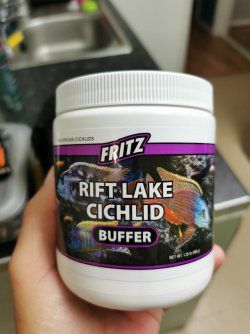You've typed KH for both of them, which is the KH, 2 or 4? Whichever way round it is, you have soft water with low KH.
You may already know all this, but just in case....
GH is a measure of divalent metal ions in the water. In practice this means mainly calcium with some magnesium and trace amounts of others. This affects fish directly. Soft water fish evolved with few minerals in the water and if they are kept in hard water they get calcium deposits in their organs which shorten their life. Hard water fish evolved in water with lots of minerals. If they are kept in soft water they suffer calcium depletion and get sick more easily. This is why we should keep fish which come from roughly the same GH as our tap water - in your case, soft water fish
KH is the measure of carbonate and bicarbonate in the water. This stabilises pH and affects fish indirectly via pH. The natural tendency of a fish tank is to become acidic - fish waste products are acidic. When there is high KH, there is plenty carbonate to react with these acids and keep the pH stable. When KH is low, the carbonates can all be used up leaving nothing to stabilise pH, so that falls. Fishless cycling involves the production of nitrite then nitrate with no water changes until the end of the cycle so they build up in the water. Nitrite and nitrate are acidic, and when KH is low it is not unusual for the pH to crash during cycling. My KH is 3 and I had a pH crash during a fishless cycle.
I suspect your KH may be 2, which is allowing your pH to drop. There are two ways to deal with this. As you have discovered, water changes top up the KH, and reset pH to tap level. You will probably find you have to do this regularly during cycling. The other way is to use bicarbonate of soda during cycling only. This artificially increases KH and pH and will stop the pH dropping. At the end of the cycle, it means changing all the water as the soda half of bicarb is sodium which is not good for soft water fish so it needs to be removed. Once there are fish in the tank, weekly 50%+ water changes will replenish KH, but as soft water fish also prefer low pH it doesn't matter if it does drift slightly downwards.
If you decide to use bicarb, remove a bit of tank water, add 1 x 5ml spoonful per 50 litres water, dissolve it then pour it back into the tank. Test the pH every time you do the other tests to make sure it's not dropping again. (40 litres will need a bit less than 1 x 5 ml spoonful)
It is interesting that it's just the one tank which has falling pH. Is there anything in the larger one which could be adding carbonate - coral, limestone, shells etc?


